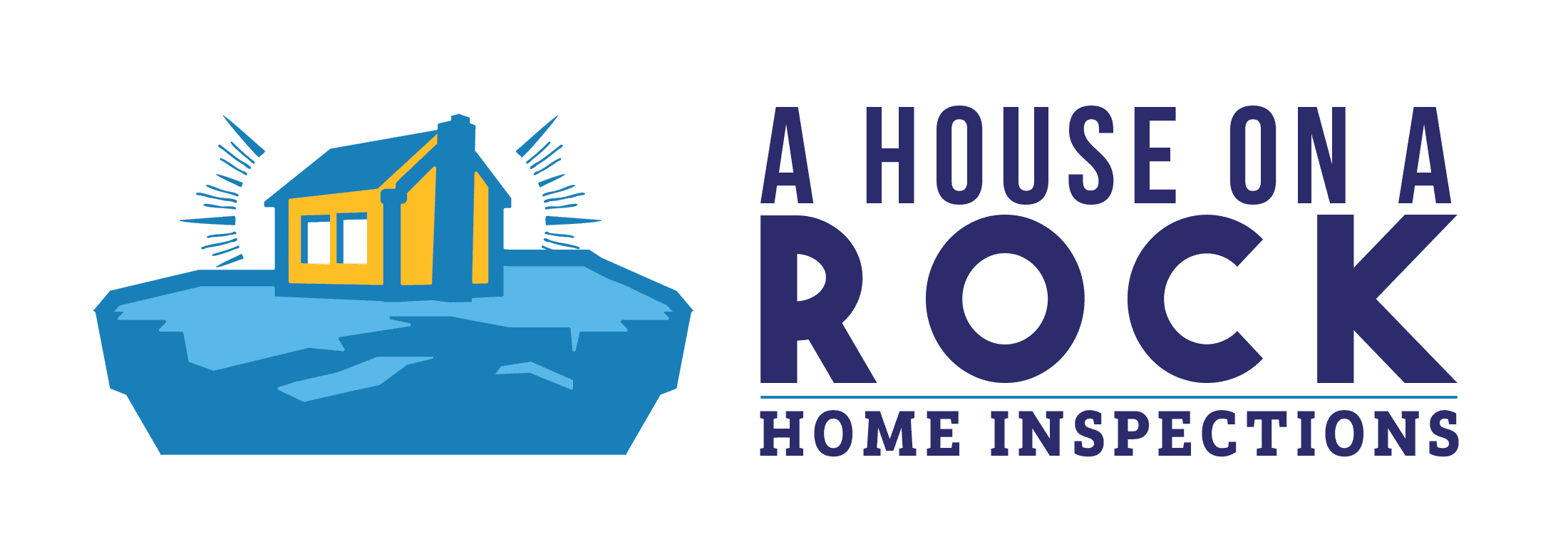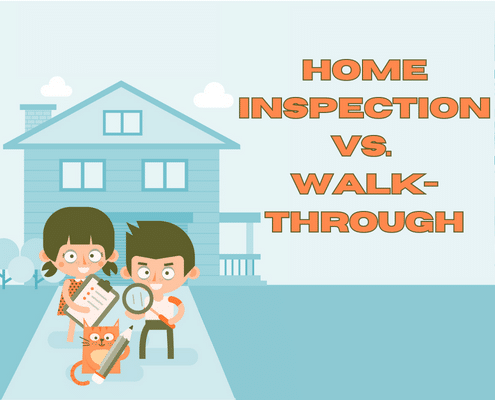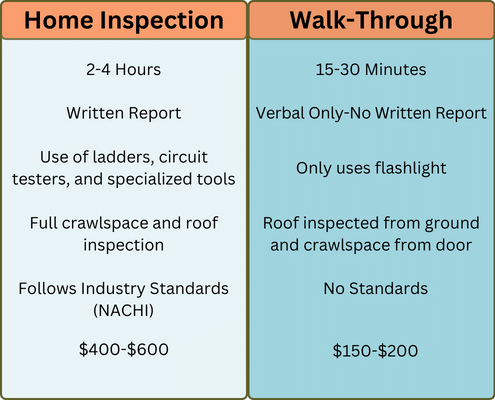Walk-Through Consultations Vs. Full Home Inspections
Walk-through consultations are a new addition to the real estate industry. So, let’s shed some light on walk-through consultations vs. full home inspections.
Traditionally, a home buyer gets a complete home inspection before closing on their home. These inspections can reveal major defects and potential show-stoppers.
However, a lack of supply of homes, and a competitive real estate market, have led to some buyers waiving their home inspection. While we have seen the aftermath of waiving inspections and don’t recommend it, we know buyers don’t always have a choice.
That’s where walk-through consultations come in.
What is a Walk-Through Consultation?
A walk-through consultation, also called a walk-and-talk consultation, is a brief walk through a home with a home inspector. Thirty minutes is usually the maximum amount of time allotted. Although the inspector may point out significant concerns, it’s not a complete home inspection.
For example, a home inspector typically doesn’t go on the roof, in the crawlspace, or attic during a walk-through. In addition, they don’t remove the electrical panel cover or use tools other than a flashlight.
And walk-throughs don’t include a written inspection report. Essentially, it’s a quick check and verbal consultation(15-30 minutes) during your showing to assess the risk of waiving your home inspection.
What is a Full Home Inspection?
On the other hand, a full home inspection includes all the major systems and components and a written report about the home’s condition. For example, home inspections include roof, exterior, foundation and structure, electrical, HVAC, system, plumbing, insulation, and ventilation.
Likewise, home inspections reveal issues like major electrical concerns, non-working air conditioners, potential foundation issues, and other significant items.
Usually, a home buyer gets a full inspection, with a written report on a home they’re buying, to identify any significant problems. Then, they work with their real estate agent to negotiate repairs or even walk away from the deal.
However, home buyers may waive their rights to certain contingencies in a competitive real estate market. For example, in a competitive bidding process, an offer with a home inspection contingency looks worse than an offer without it.
So, a potential home buyer may waive their home inspection contingency in their purchase offer.
Walk-Through Consultations Vs. Full Home Inspections
Walk-through consultations differ from full home inspections in time, scope, tools, and price.
Time
Time is the most apparent cue that walk-throughs differ greatly from home inspections. While a home inspection typically lasts 2-4 hours, a walk-through takes 15-30 minutes. Therefore, buyers typically only have a short window of time (15-30 minutes) to view a property, and that’s as long as a walk-through lasts.
This is only enough time to address some specific client concerns and get a quick understanding of a home.
Scope
Most home inspectors follow the InterNACHI standards of practice or their State issued standard of practice. These standards outline a pretty extensive home inspection. However, there is no industry standard for walk-throughs. Therefore, they vary greatly from inspector to inspector.
Most inspectors walk around the exterior and interior of the home and point out potential concerns. At best, a walk-through assesses the risk of waiving a home inspection.
Tools
Technically, a flashlight and an outlet tester are the only tools a home inspector needs to perform a home inspection. However, most home inspectors carry a truckload of tools. For example, most inspectors use ladders, gas detectors, infrared thermometers, circuit analyzers, measuring tapes, voltage testers, moisture meters, and more.
On the other hand, a flashlight (if that) is the only tool used during a walk-through.
Price
It should go without saying that a home inspection is more expensive than a walk-through. Home inspections typically cost $400-$600.
Although walk-throughs are new to the industry, pricing is settling at around $200.
When to Get a Walk-Through Consultation
A walk-through, or “walk and talk inspection,” should never replace a full home inspection. However, a walk-through can mitigate your risk if you consider waiving your inspection to enhance your offer.
What is a Home Inspection Contingency?
A home inspection contingency is a clause included in a real estate contract that allows the buyer to hire a professional home inspector to assess the property’s condition before finalizing the purchase. The contingency typically outlines the specific terms of the inspection, such as the scope of the inspection and the timeframe for completing it, as well as the rights and responsibilities of both the buyer and seller.
For example, your contract might stipulate that the inspector must be licensed and that the inspection must be completed within seven days.
The buyer may negotiate repairs, credits, or a price reduction if the home inspection reveals significant issues or defects the seller did not disclose.
Then, if the seller is unwilling to make the requested repairs or offer a lower price, the buyer may be able to back out of the sale without penalty.
Essentially, the purpose of a home inspection contingency is to protect the buyer from unexpected and costly repairs or issues that may not have been apparent during the initial viewing.




